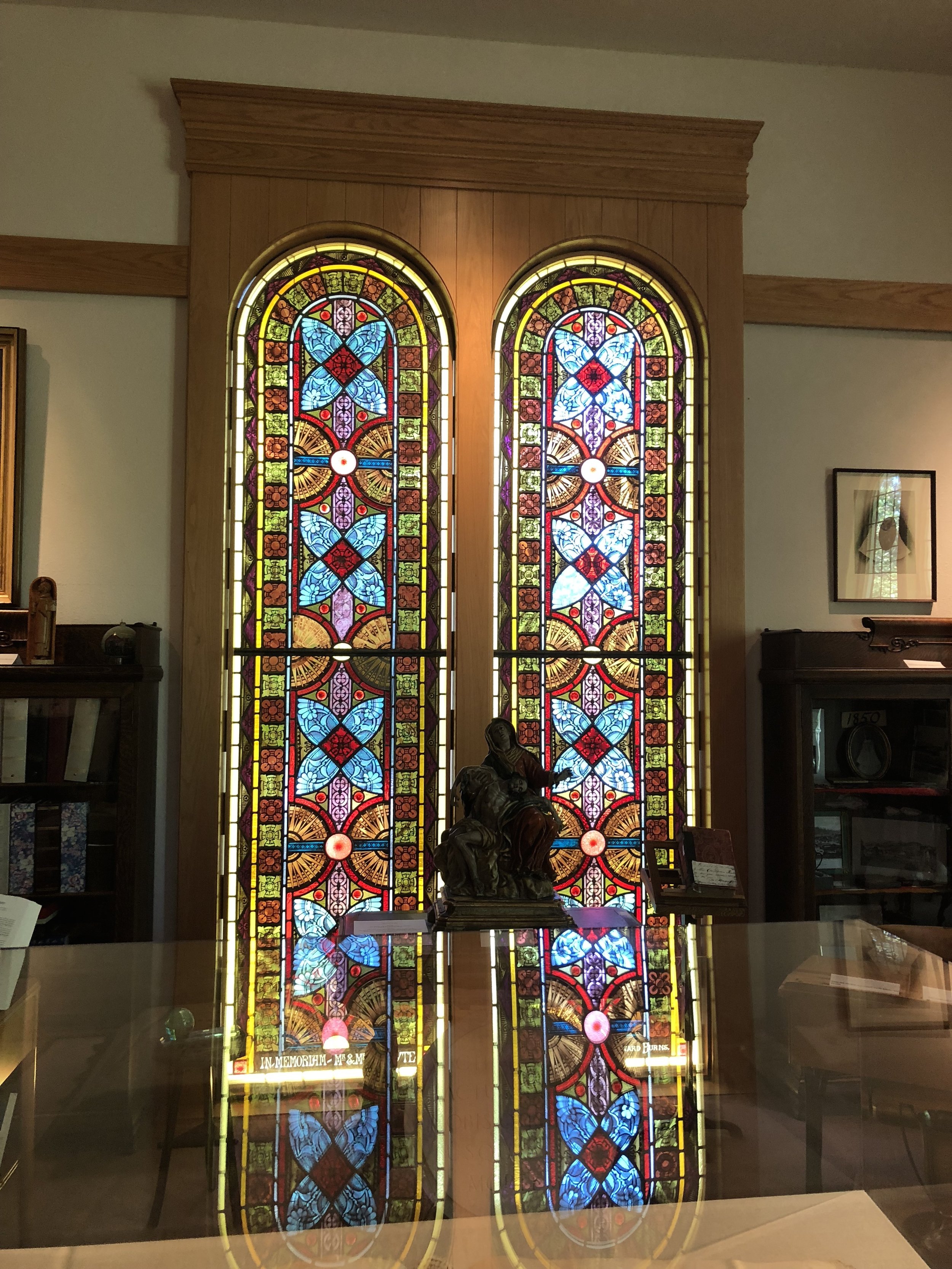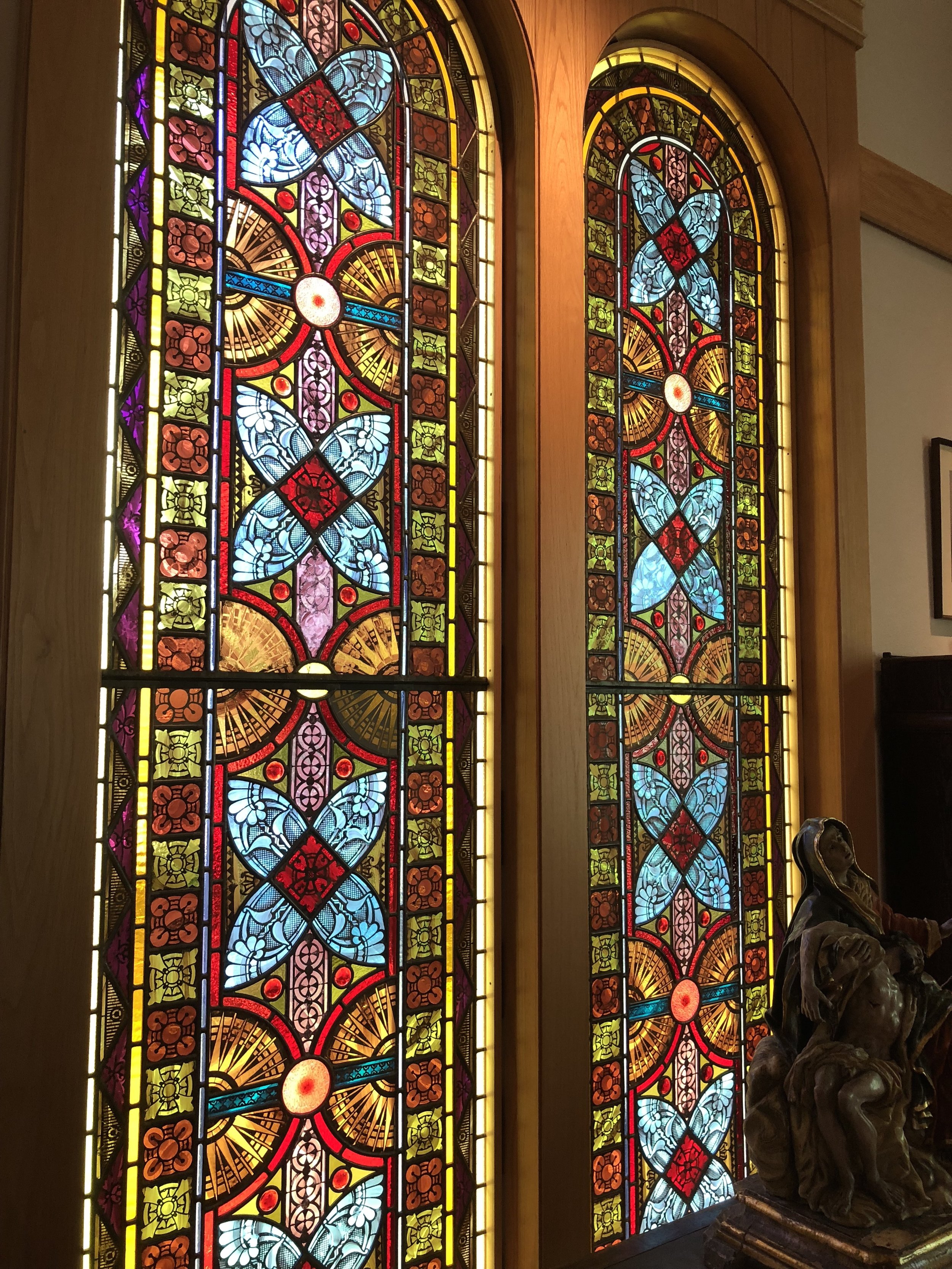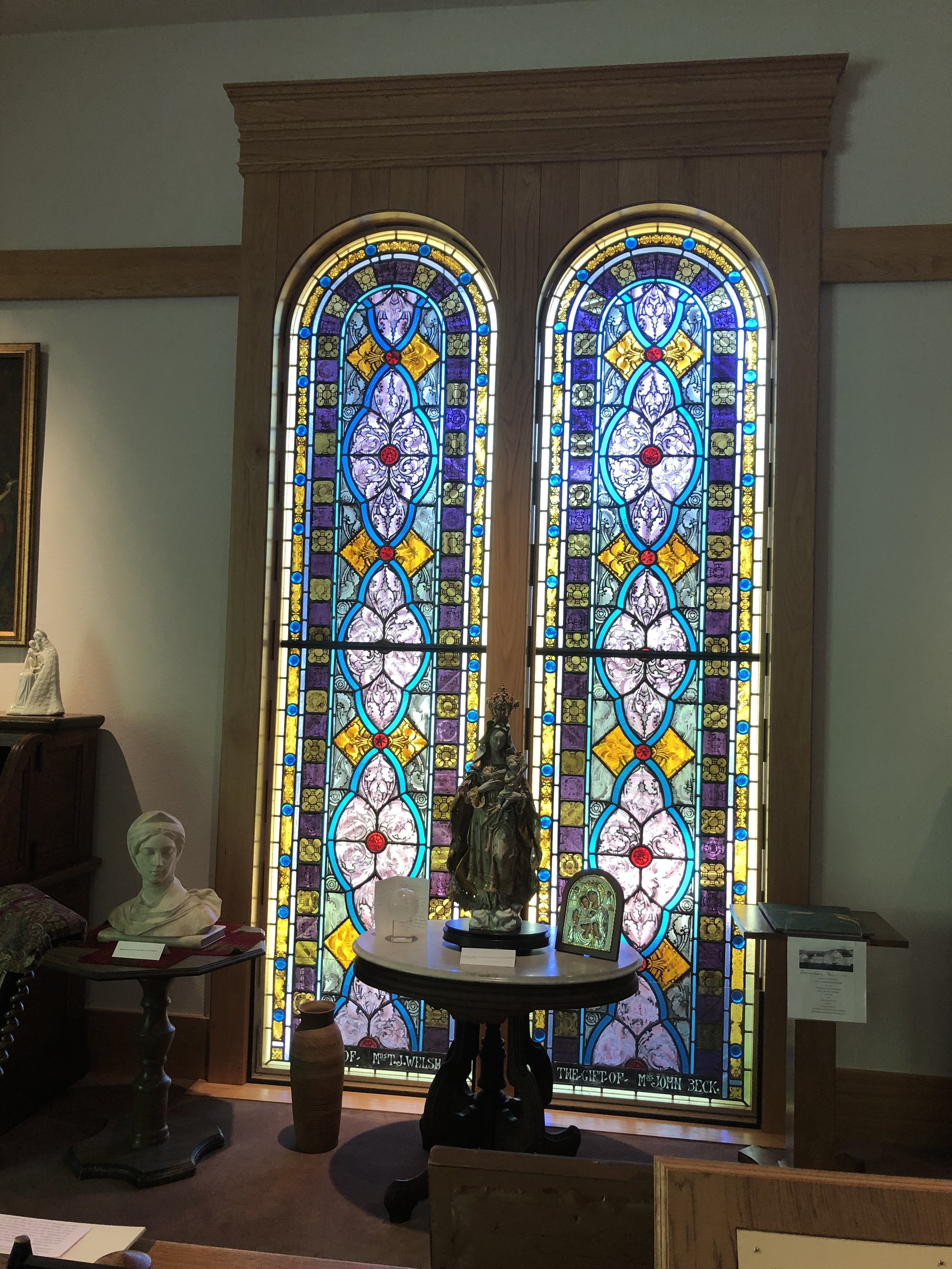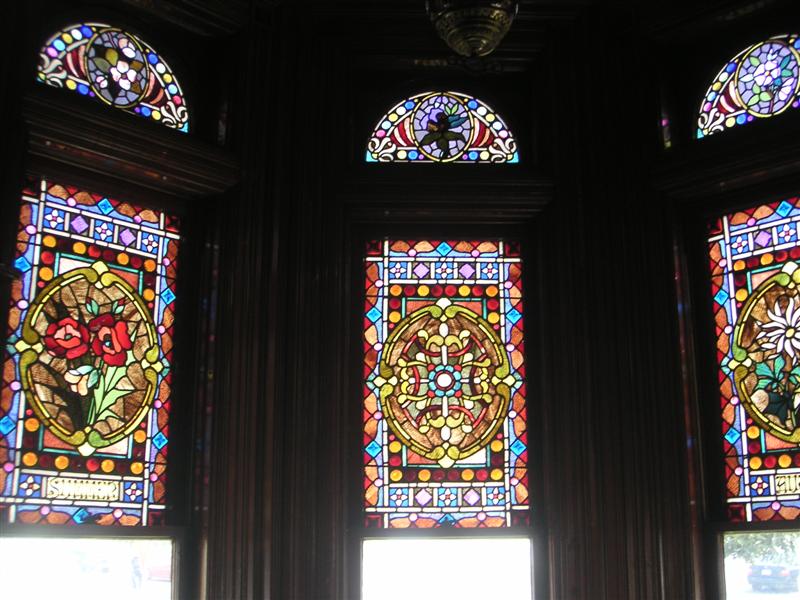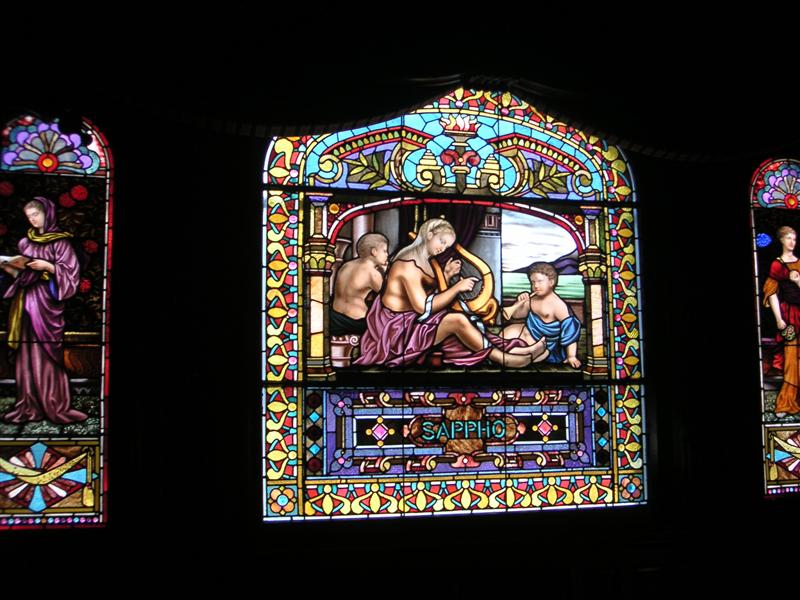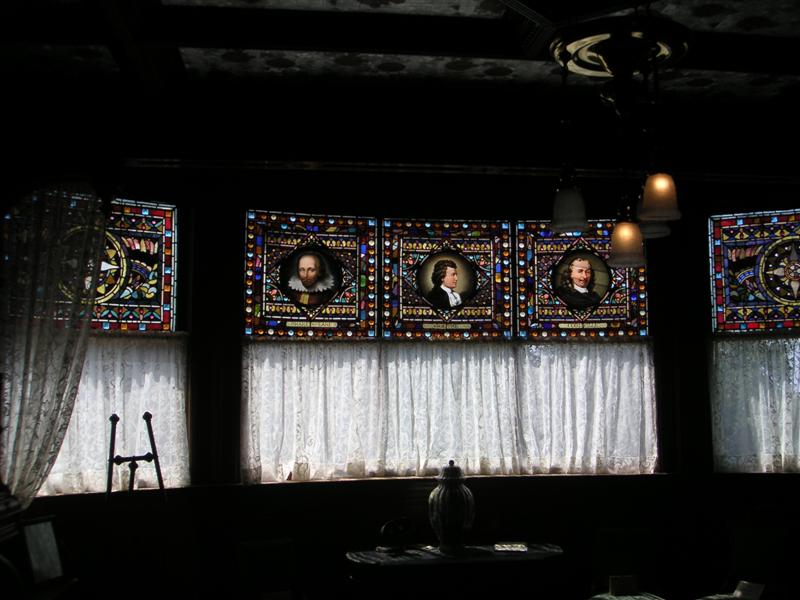We are researching the life and work of John Mallon. You can visit the Table of Contents here.
Are you one of the millions of people who have visited the Winchester Mystery House? If your answer is “yes”, you have probably observed some beautiful stained glass windows throughout the house, like the one pictured below.
Image courtesy of Rachel Wong | Santa Clara University Digital Exhibits
For those unfamiliar with the famous turn-of-the-20th-century house, its owner, Sarah Winchester, was particularly creative in its development. Legend has it that Sarah, mourning the loss of her daughter and husband, was compelled to build endlessly, haunted by spirits. In the process, her house in San Jose, California, turned out a bit odd, with staircases and doors leading to nowhere, superfluous rooms and spaces, and other strange building features.
Note the door to nowhere (flanked by the beautiful stained glass windows). Image courtesy of Nathan Lamoreau | Santa Clara University Digital Exhibits
If Sarah was a bit “out there”, she also had incredible taste with a matching pocketbook. She hired teams of talented artisans who designed and manufactured beautiful decorations for her house, an eccentric ode to Aestheticism. And as typical, unless the accounting books remain, it’s not easy to identify the skilled craftspeople who built and decorated Sarah’s mansion.
So for more than 100 years, the home’s extensive collection of stained glass windows remained anonymous. Finally, someone started looking into the matter, coincidentally around the same time we started this blog. Hundreds of miles away, in Victoria, Canada, a historian sought to identify the maker of stained glass windows at a Victorian-era mansion called Craigadarroch Castle. He soon found a connection to the Winchester windows. The design similarities were uncanny. On detailed review it became clear that whoever created the Winchester windows must have also created the windows for Craigadarroch Castle. But who?
That answer came almost immediately after the connection was realized. Back at the Winchester House, in a room undergoing restoration, an old envelope floated from an opened wall and onto the floor. On the front of the envelope was a return address for the Pacific American Decorative Co. in San Francisco, California. At the time this occurred, we were in contact with one of the artisans working on the restoration project. He approached us curious to know if we had any context for the envelope. We knew immediately that the company was one of Mallon’s! Little did we know that others were already working on this mystery and that the Mallon connection would have even greater meaning.
The envelope. The “Memorial Windows” image represents an actual memorial window that Mallon built for Leland Stanford to memorialize the loss of Stanford’s son. It is located at St. Paul’s Episcopal Church in Sacramento, California. Image courtesy of Winchester Mystery House.
We were soon connected to the Winchester house historian, Janan Boehme, who excitedly confirmed our deduction. She also invited us to a special tour of the house which took us into parts not on the standard tour. And on top of that, we got to hold the mysterious envelope (in its protective sleeve, of course)!
In the process of this tour we experienced Mallon’s work like never before. In one part of the house, every window was leaded and bejeweled so that during the day it sparkled like a jewel box. Many windows had the classic floral, foliate, rope, and web patterns that Mallon favored. We also recognized the same glass that he used for other projects.
Image Lucas Glass Design + Restoration
As exciting as it was to be among so many Mallon windows, the serendipity of the mysterious envelope and the connection to Craigdarroch Castle made this experience all the more special. Is Sarah smiling to herself from the afterlife? Perhaps she can rest easier knowing that she brought beauty to the world through her unbridled creativity. We highly recommend visiting the house so you can ask her yourself!
https://www.sfgate.com/bayarea/article/winchester-mystery-house-windows-true-facts-14444695.php
© 2022 Lucas Stained Glass Design + Restoration

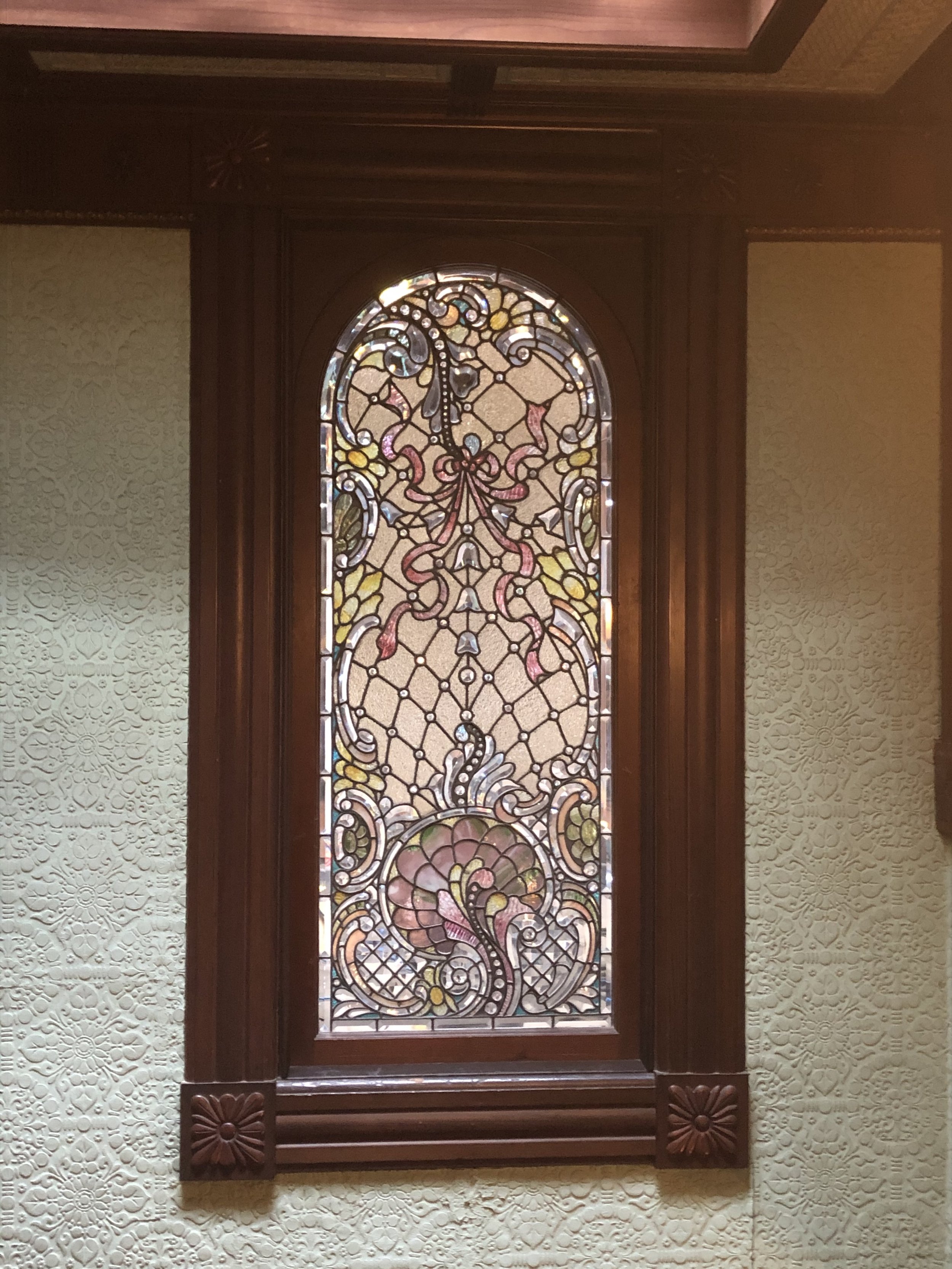






![By Lexaxis7 [CC BY-SA 3.0 (https://creativecommons.org/licenses/by-sa/3.0)], from Wikimedia Commons](https://images.squarespace-cdn.com/content/v1/5955c00c2cba5e1a1df2b943/1541266878081-S745WED9QG8FKYHDR1B2/A_view_of_the_magnificent_stained_glass_inside_the_Cosmovitral%2C_Toluca%2C_Mexico..jpg)
![By Lexaxis7 [CC BY-SA 3.0 (https://creativecommons.org/licenses/by-sa/3.0)], from Wikimedia Commons](https://images.squarespace-cdn.com/content/v1/5955c00c2cba5e1a1df2b943/1541266527679-G86WVD72537VIFGMKCIP/The_magnificent_stained_glass_inside_the_Cosmovitral%2C_Toluca%2C_Mexico..jpg)
![By Diego Callejas [GFDL (http://www.gnu.org/copyleft/fdl.html) or CC-BY-SA-3.0 (http://creativecommons.org/licenses/by-sa/3.0/)], from Wikimedia Commons](https://images.squarespace-cdn.com/content/v1/5955c00c2cba5e1a1df2b943/1541267958673-TJCXBLU10AGA6VXDIF7R/The_Sun_Man_at_Cosmovitral.jpg)

![The motherhouse stood for just over 100 years before it was heavily damaged by fire.Title: Dominican Convent, San Rafael, California, circa 1908 [postcard]Date: circa 1908Collection: General CollectionOwning Institution: Marin County Free LibrarySou…](https://images.squarespace-cdn.com/content/v1/5955c00c2cba5e1a1df2b943/1532816231158-2E6SDDKTMETFGRBP3ZVC/general_11_large.jpg)
